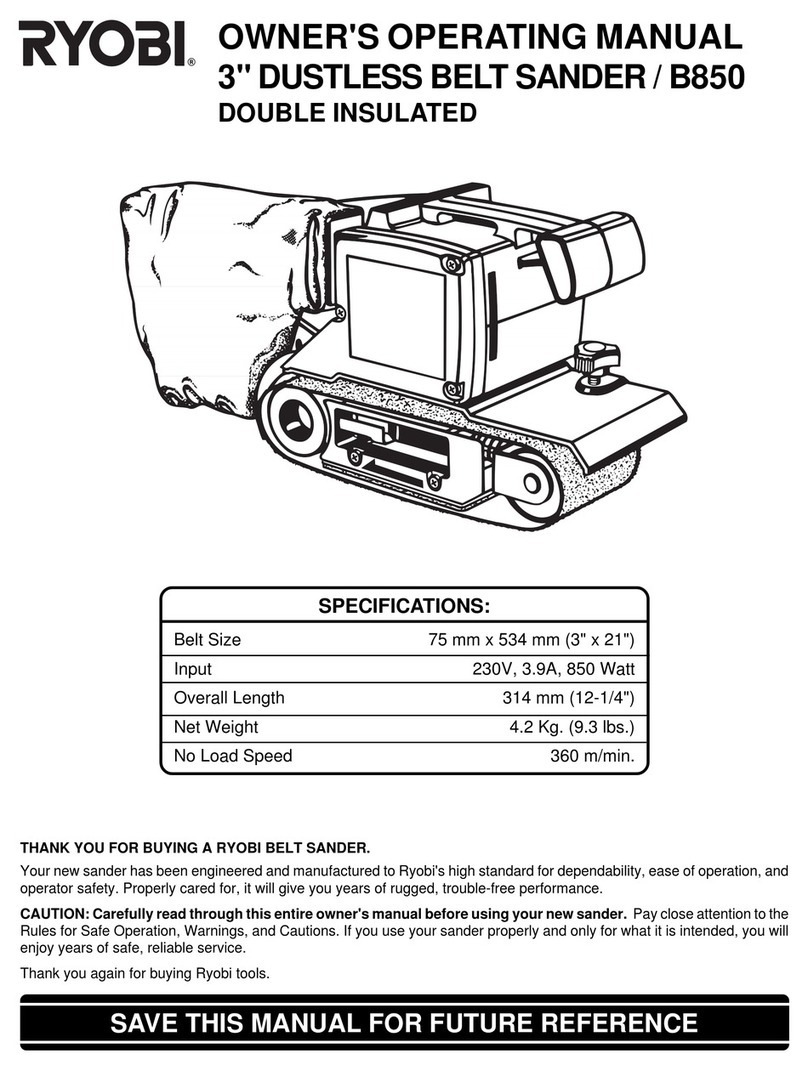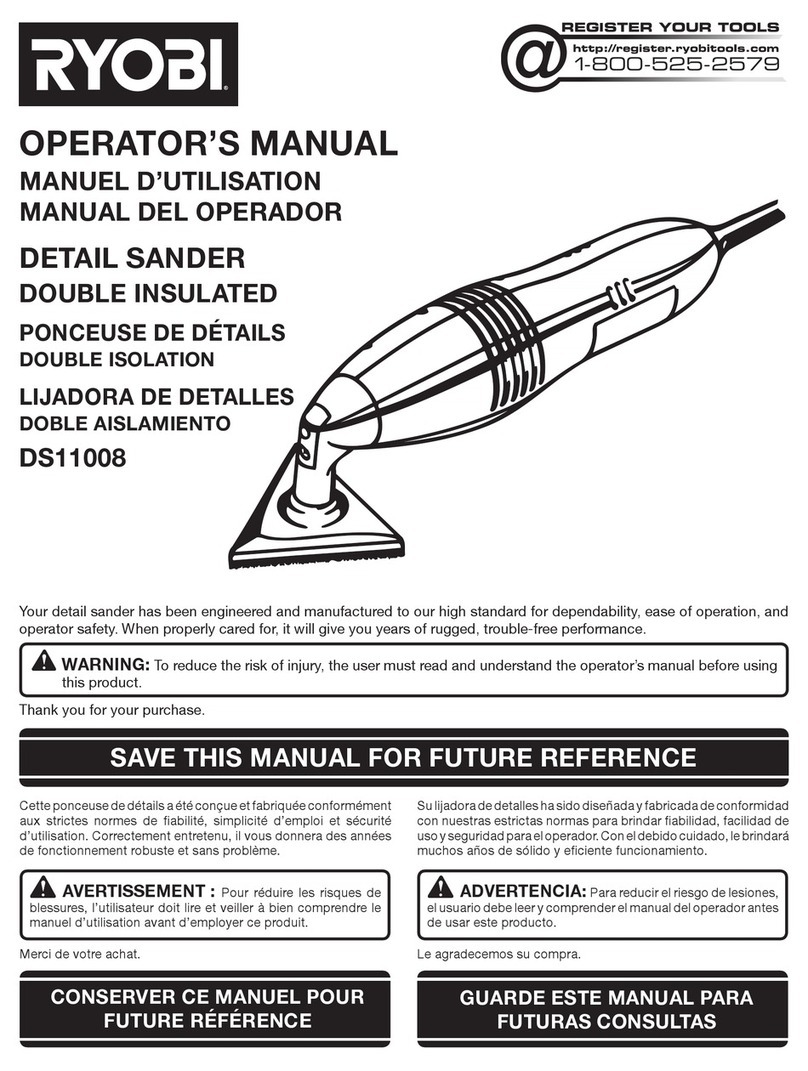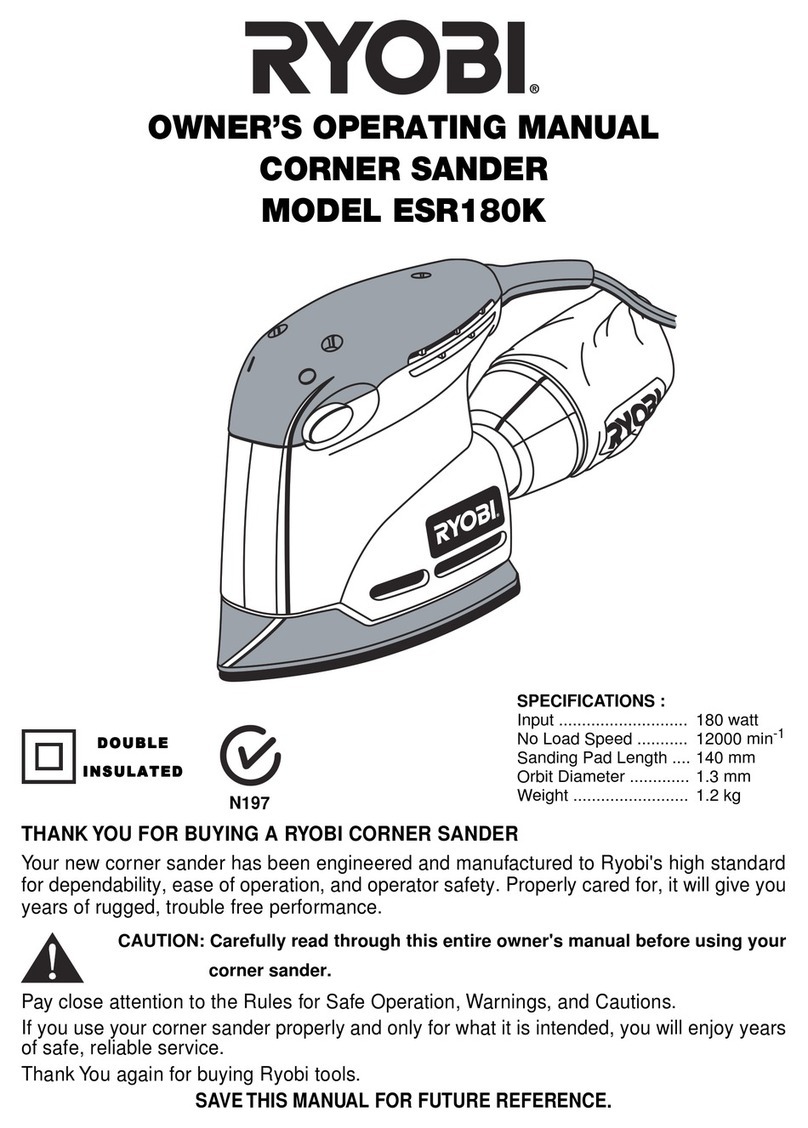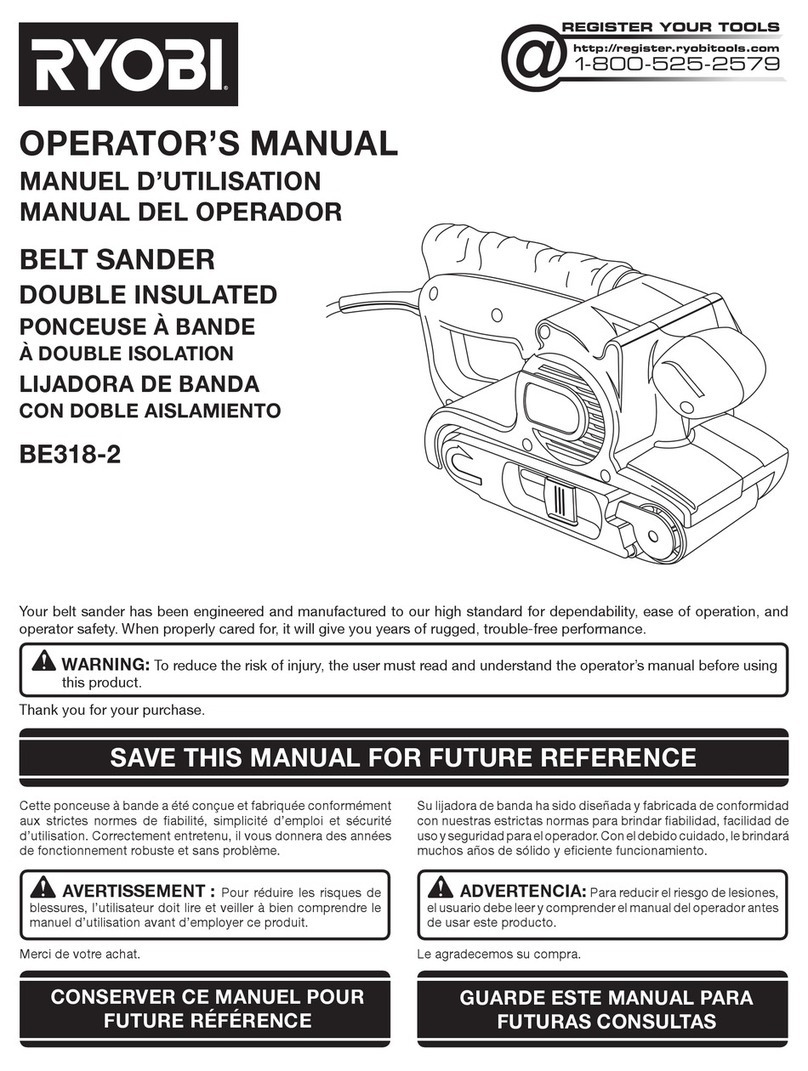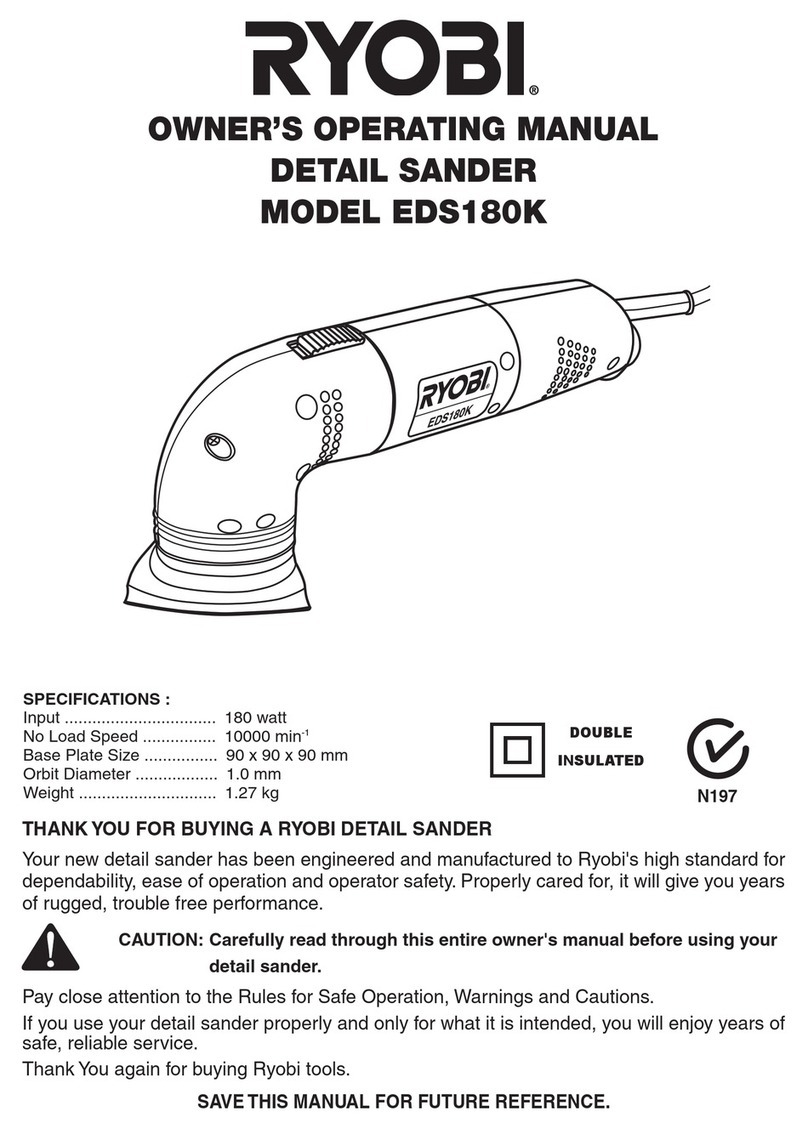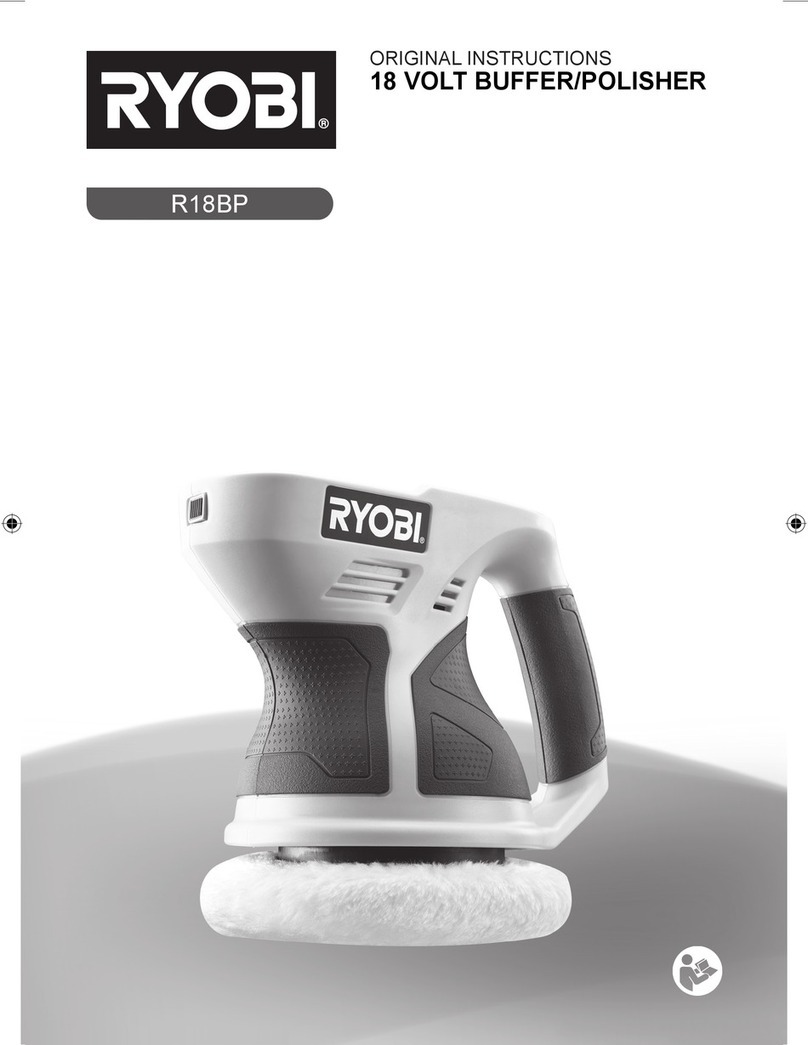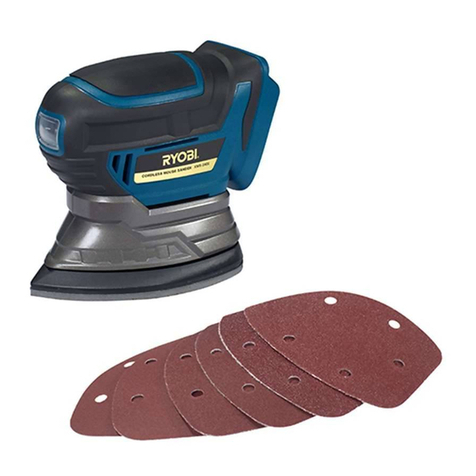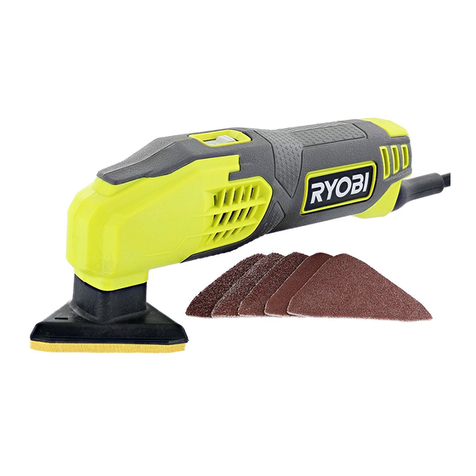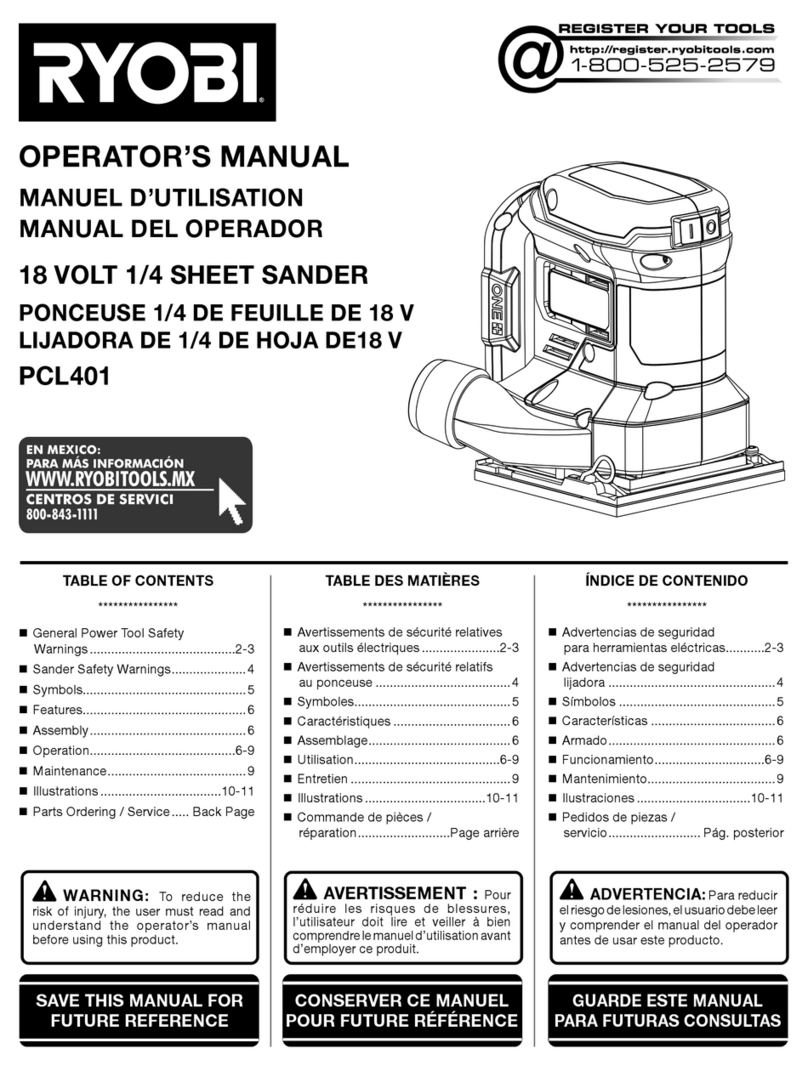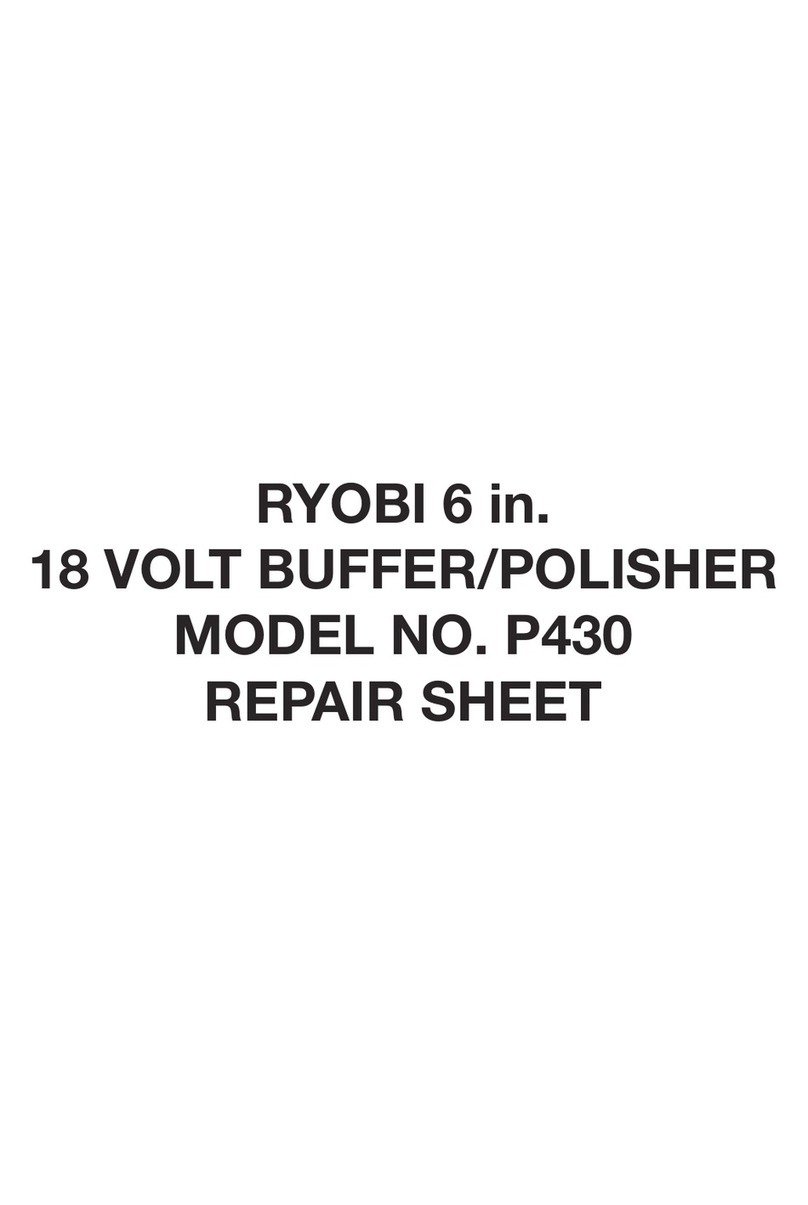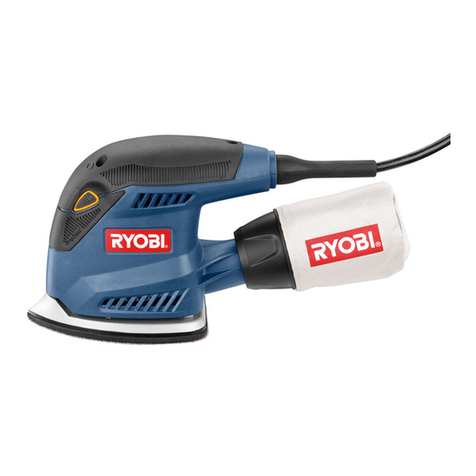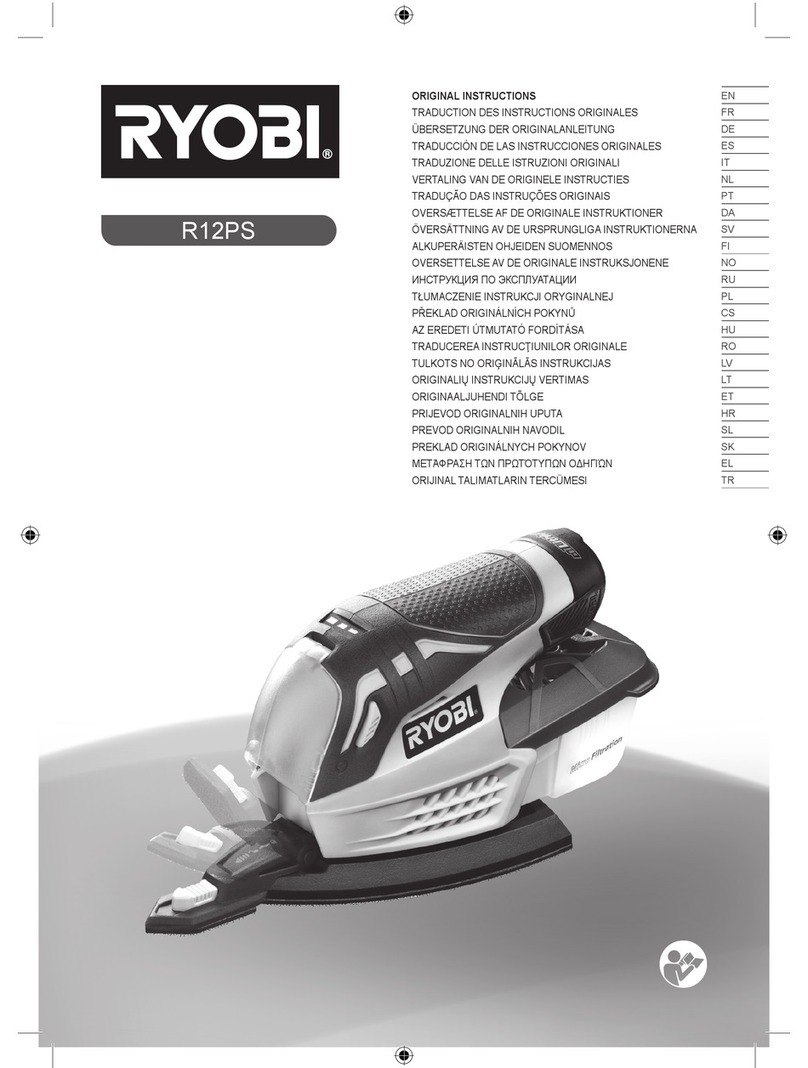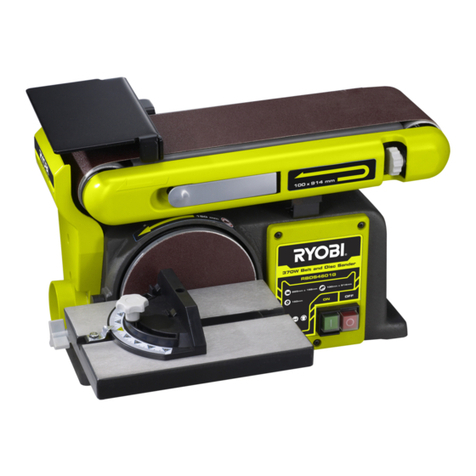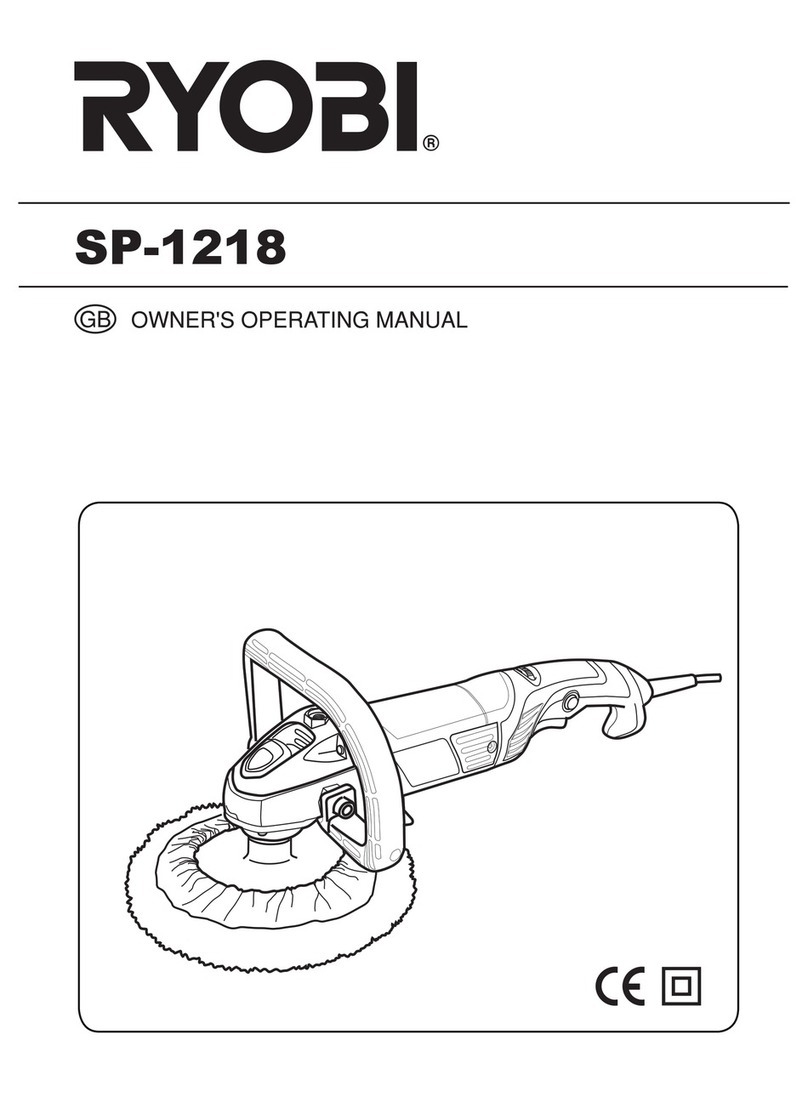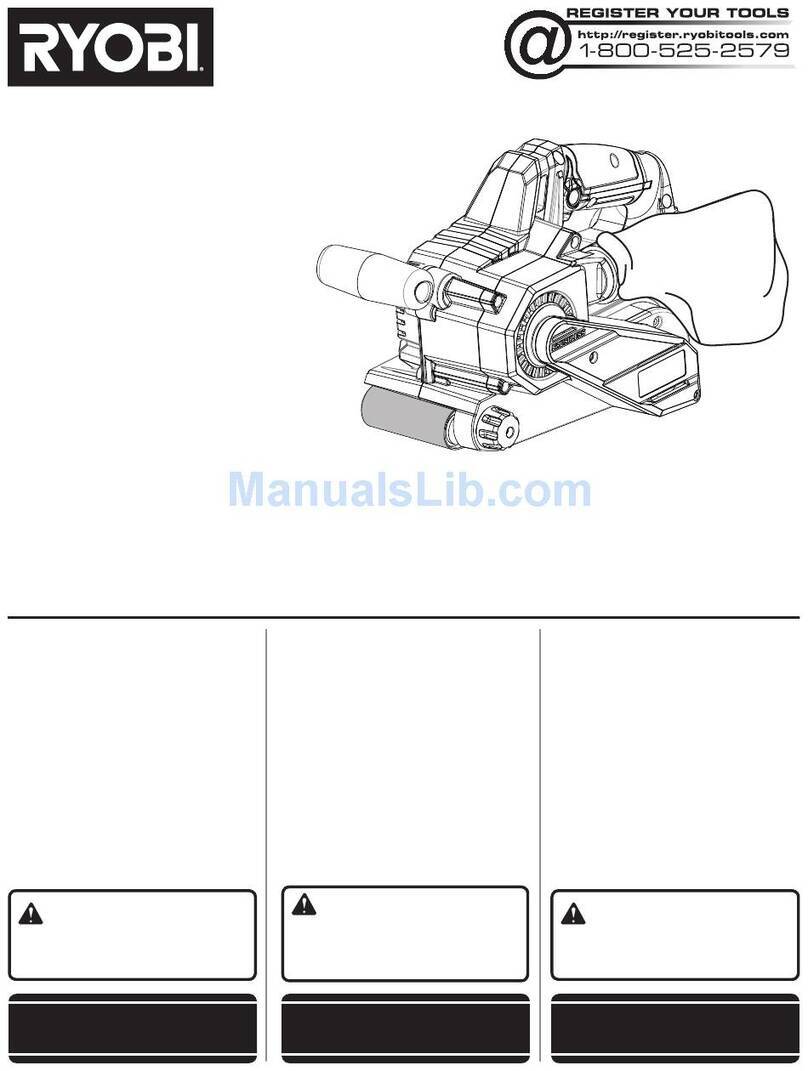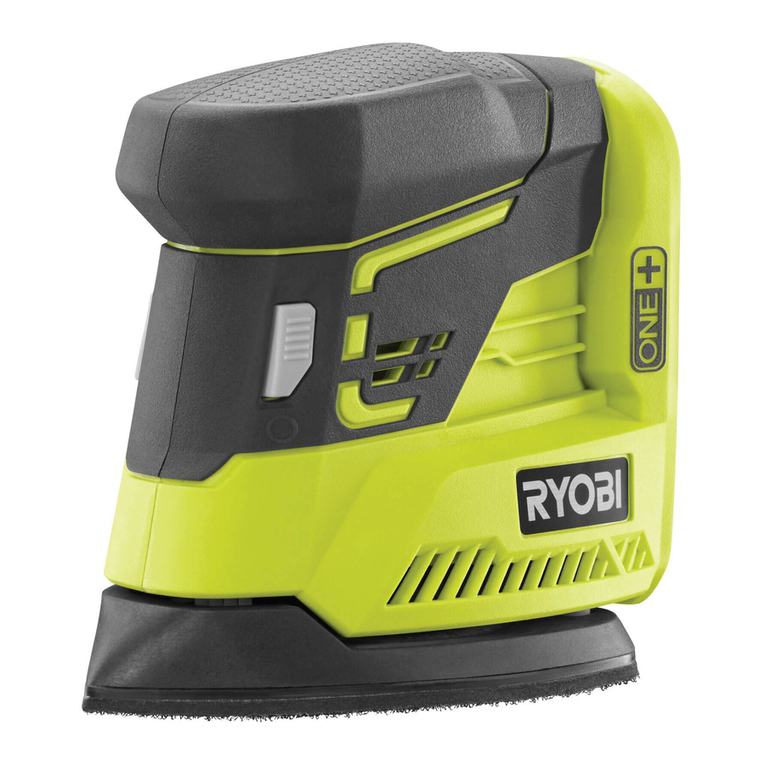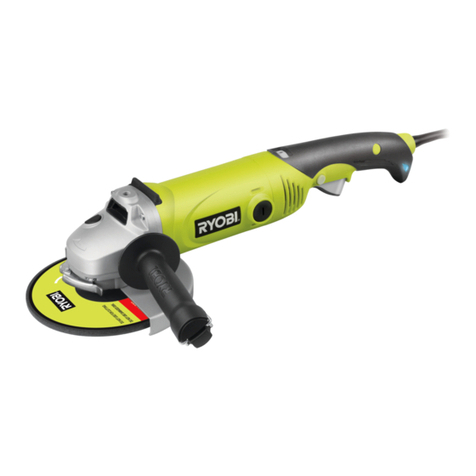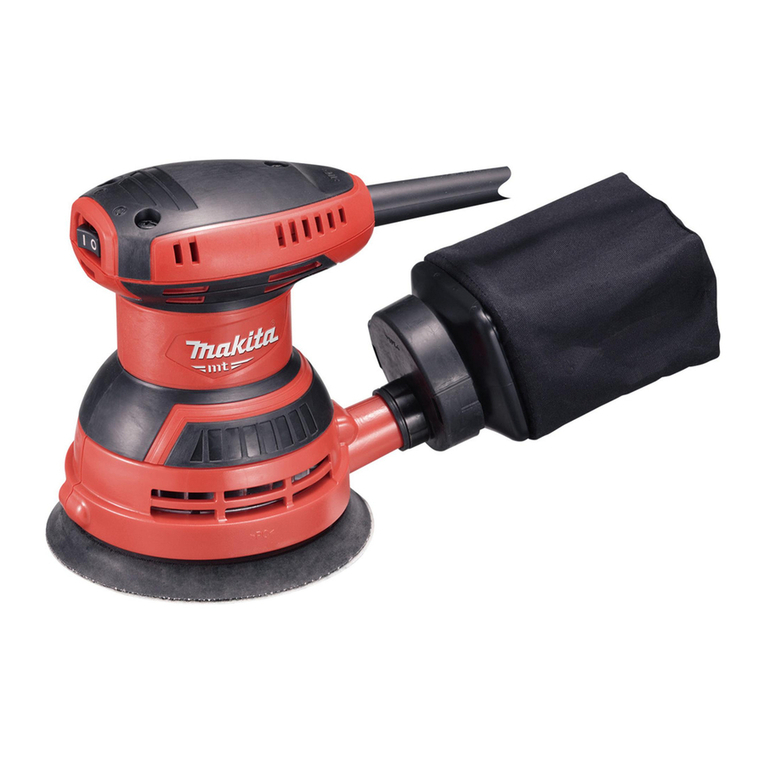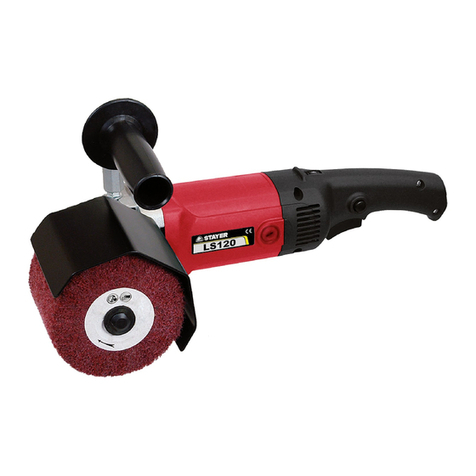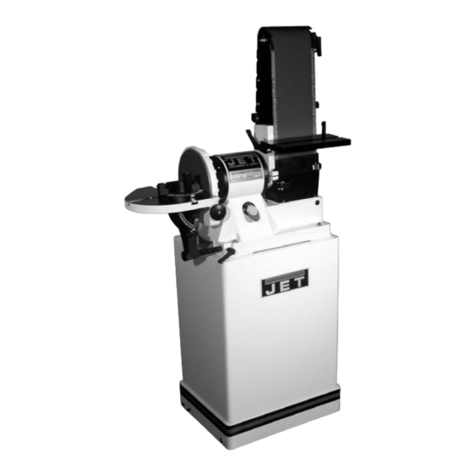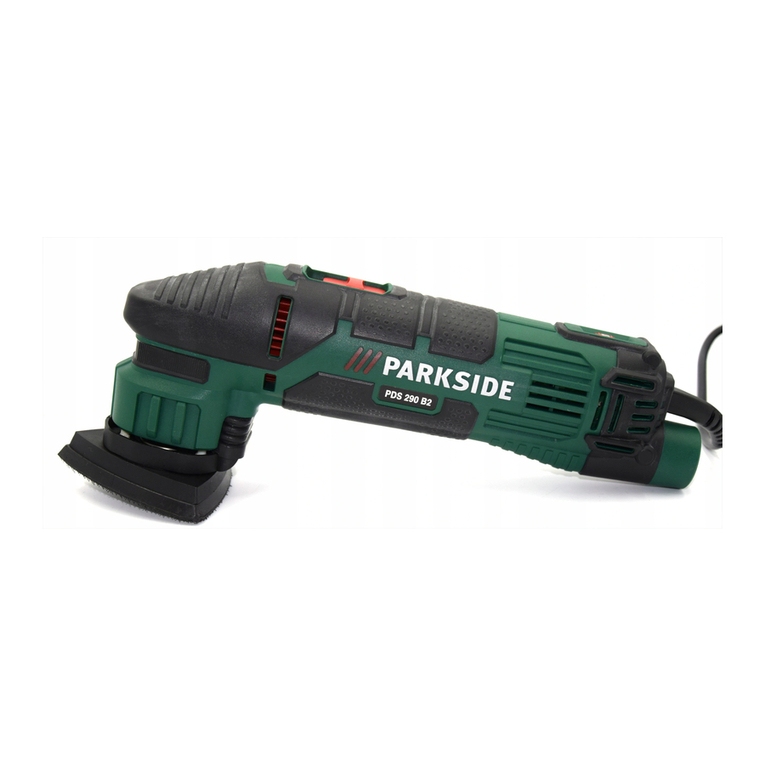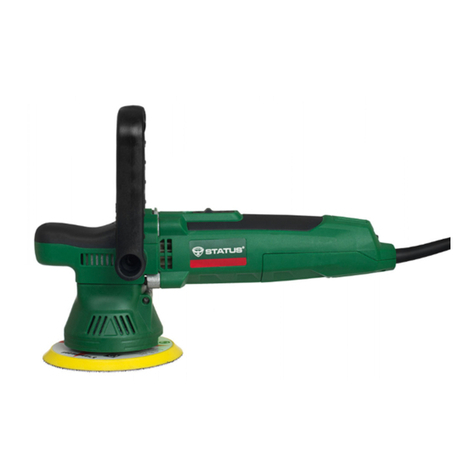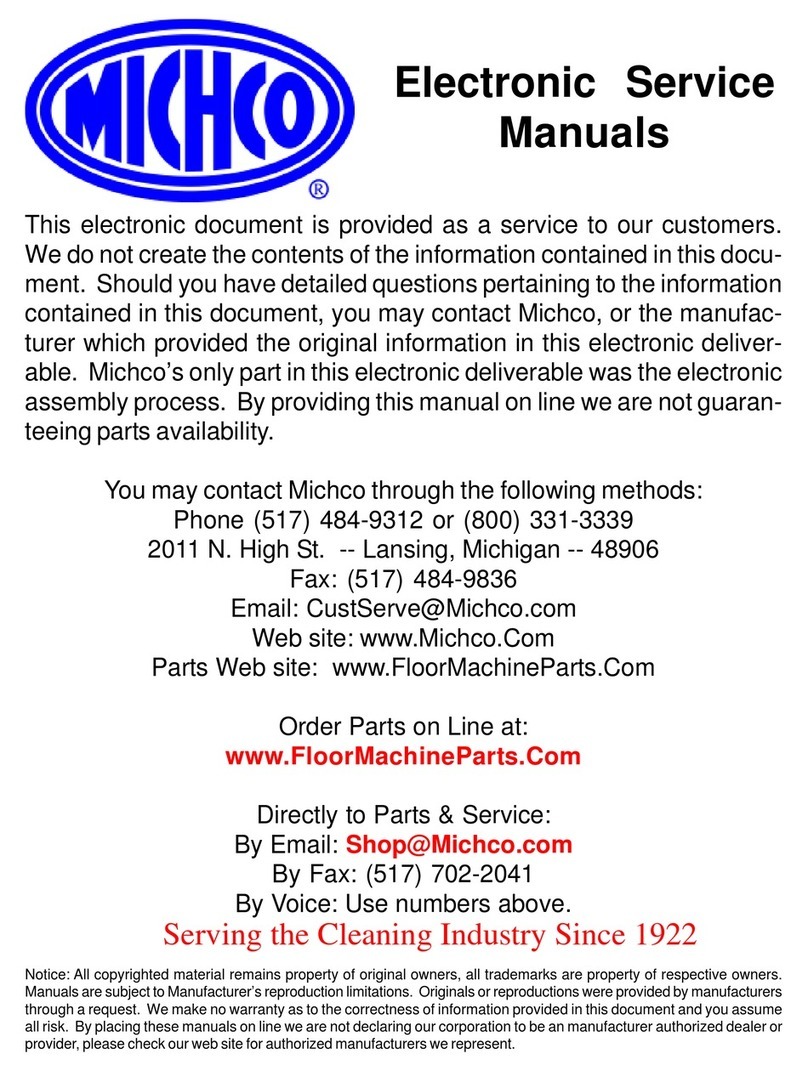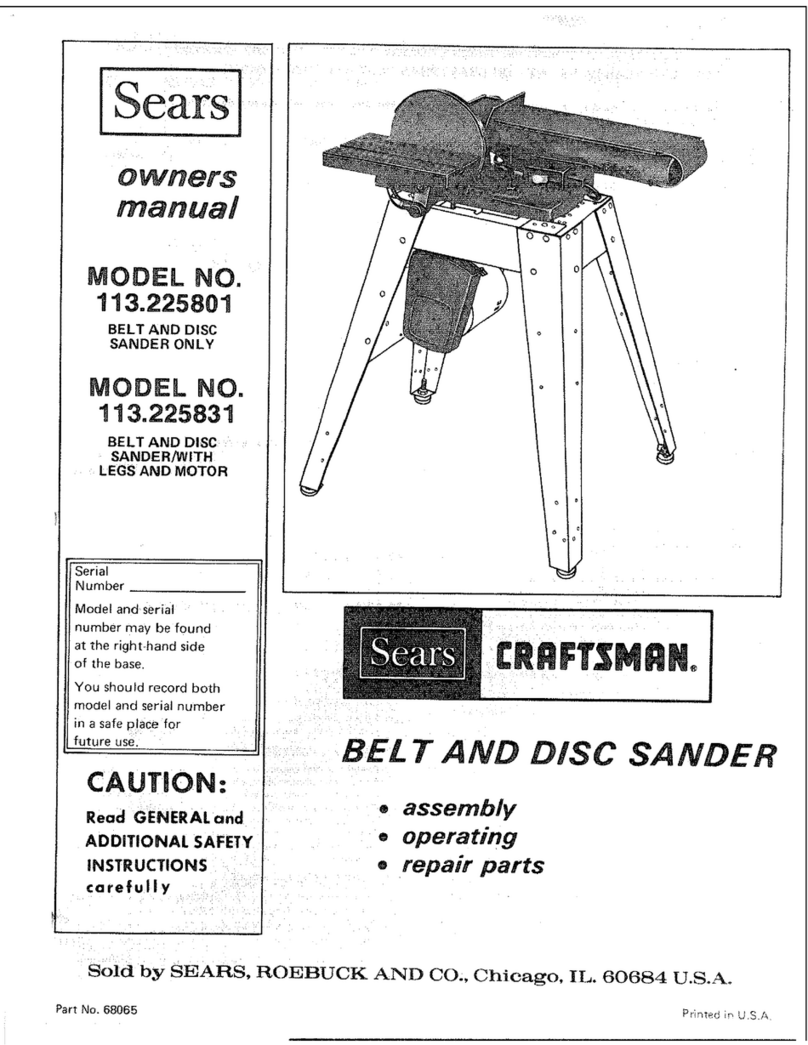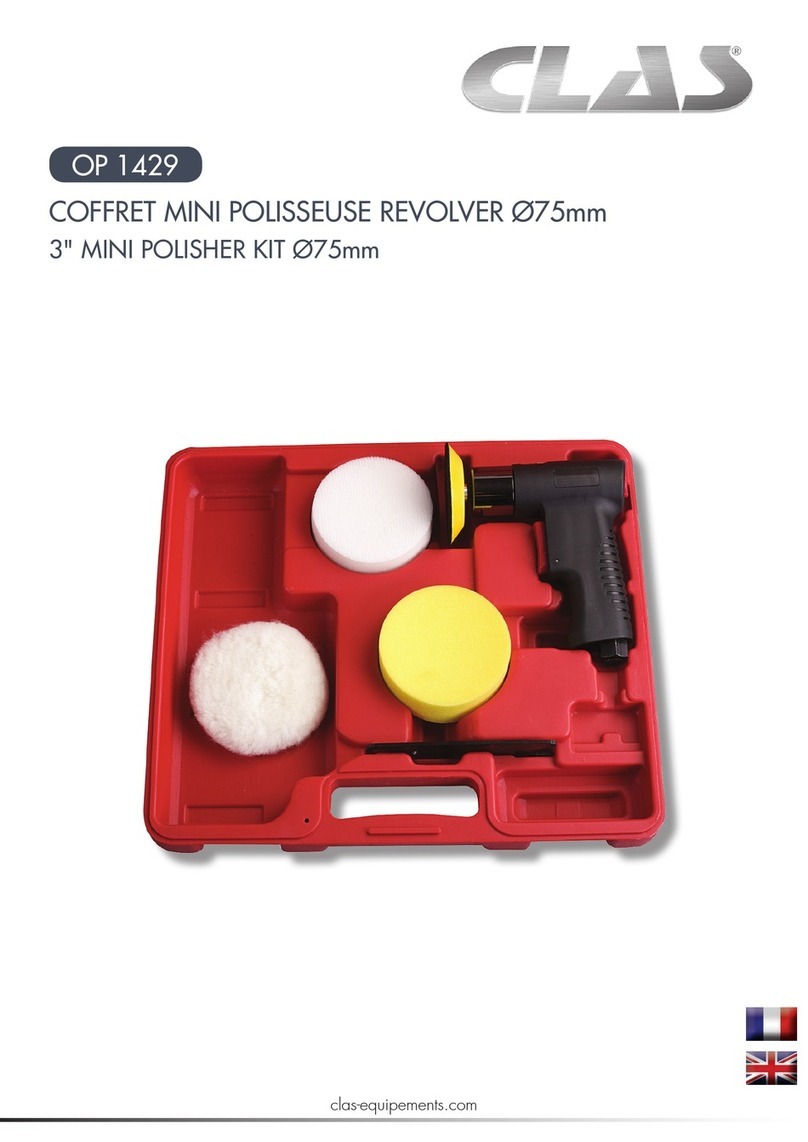
RISQUES RESIDUELS
Même lorsque le produit est utilisé selon les prescriptions,
il reste impossible d'éliminer totalement certains facteurs
de risque résiduels. Les dangers suivants risquent de se
présenter en cours d'utilisation et l'utilisateur doit prêter
particulièrement garde aux points suivants :
ŶCoincement ou entrée en contact avec la bande de
ponçage en mouvement
Une attention supplémentaire doit être exercée, en
particulier en fonctionnement inversé, afin d'éviter que
les doigts et les mains de l'opérateur entrent en contact
avec la bande abrasive ou soient coincés dans les
rouleaux.
ŶEntrée en contact ou inhalation des poussières
Lors de l'utilisation du produit, une quantité
considérable de poussière et de particules fines sera
produite. Utilisez le dispositif de collecte des poussières
ou raccordez un aspirateur d'extraction des poussières
lorsque vous utilisez le produit. Portez un masque de
protection respiratoire adapté aux matériaux coupés
Assurez une ventilation correcte à l'espace de travail.
Ne mangez pas, ne buvez pas, et ne fumez pas dans
l'espace de travail.
ŶRisque d’explosion
La poussière fine accumulée est susceptible de
s'enflammer et de provoquer un incendie. Gardez
l'espace de travail propre et exempt de poussières.
Les systèmes d'aspiration et de collecte de poussières
doivent être régulièrement nettoyés soigneusement.
Des étincelles chaudes sont susceptibles d'être
produites lorsque vous poncez du métal.
ŶBruit et vibration
Portez une protection oculaire lorsque vous utilisez le
produit. N'utilisez pas le produit de façon prolongée.
REDUCTION DES RISQUES
Il a été reporté que les vibrations engendrées par les outils
tenus à main peuvent contribuer à l'apparition d'un état
appeléleSyndromede Raynaudchezcertainespersonnes.
Les symptômes peuvent comprendre des fourmillements,
un engourdissement et un blanchiment des doigts,
généralement par temps froid. Des facteurs héréditaires,
l'exposition au froid et à l'humidité, le régime alimentaire,
le tabagisme et les habitudes de travail peuvent contribuer
au développement de ces symptômes. Certaines mesures
peuvent être prises par l'utilisateur pour aider à réduire les
effets des vibrations:
ŶGardez votre corps au chaud par temps froid. Lorsque
vous utilisez l'appareil, portez des gants afin de garder
vos mains et vos poignets au chaud. Le temps froid est
considéré comme un facteur contribuant très largement
à l'apparition du syndrome de Raynaud.
ŶAprès chaque session de travail, pratiquez des
exercices qui favorisent la circulation sanguine.
ŶFaites des pauses fréquentes. Limitez la quantité
d'exposition journalière.
Si vous ressentez l'un des symptômes associés à ce
syndrome, arrêtez immédiatement le travail et consultez
votre médecin pour lui en faire part.
UTILISATION
ŶN'utilisez pas le produit sans bande correctement
mise en place et alignée. Une bande de ponçage
mal alignée est susceptible de s'échapper du produit
et de provoquer des blessures et des dommages à la
ponceuse.
ŶFixez l'élément à poncer sur un établi à l'aide d'un étau
ou d'un serre-joints. Ceci permet d'éviter que l'élément
à poncer ne se transforme en projectile.
ŶUtilisez les poignées fournies pour maintenir et
contrôler le produit des deux mains.
ŶNe forcez pas forcer le produit. Utilisez un produit
adapté au travail à effectuer. Un produit adapté utilisé
dans les limites de ses capacités effectuera un meilleur
travail dans de meilleures conditions de sécurité.
ŶN'appliquez pas de pression excessive sur le produit.
Laissez le poids du produit exercer la pression
correcte et utilisez vos mains pour guider la ponceuse.
Une pression excessive surchargera le produit et
endommagera le moteur. Le fait d'appliquer une plus
forte pression n'enlèvera pas plus de matière et réduira
l'efficacité du ponçage, au contraire.
ŶChangez souvent la bande de ponçage pour que le
produit conserve son efficacité en termes d’enlèvement
de matière.
ŶDémarrez le produit à l'aide de la gâchette interrupteur
et laissez la bande atteindre une vitesse correcte.
Abaissez ensuite la bande sur l'élément à poncer.
Maintenez fermement le produit des deux mains car
le mouvement de la bande entraînera le produit vers
l'avant.
ŶChoisissez une bande de la bonne taille et à la
granularité adaptée au travail à effectuer. Utilisez un
grain grossier pour enlever plus de matière ; les grains
plus fins retirent moins de matière mais procurent une
meilleure finition. Remplacez la bande si elle devient
endommagée, usée, ou encrassée.
ŶIl est normal de poncer et d'effectuer des mouvements
d'avant en arrière dans le sens du grain du matériau.
Un ponçage en travers du grain du matériau est
possible mais le résultat sera une surface rayée et
endommagée.
AVERTISSEMENT
La sciure en provenance de certaines peintures, vernis
et matériaux est susceptible de provoquer des irritations
ou des réactions allergiques. La sciure de bois tels que
le chêne, le hêtre, l’aggloméré et autres est cancérigène.
Les matériaux contenant de l’amiante ne doivent être
travaillés ou traités que par du personnel spécialisé.
ŶUtilisez le système de collecte des poussières ou
reliez le conduit d'évacuation à un système d'aspiration
6| Français
